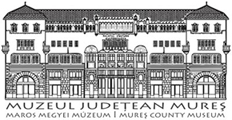Marisia - Maros Megyei Múzeum Évkönyve 32/2. (2012)
Articles
M.-M. Ciutä *** The shape and characteristics of the Bl/1995 feature from Alba Iulia-Lumea Nouä show the usual properties of early Vinca pit houses, but the inventory points to a special character of the dwelling, connected largely to the spiritual customs of these communities. A very small number of similar artefacts can be found in early Vinca settlements from Transylvania (Ciutä 2010; Ciutä-Florescu 2010) and Banat (Lazarovici 1977a; 1977b; Lazarovici 1979, 85-107), as well as in the eponymous site in Serbia (Vasic 1936). The preservation and perpetuation of the archetypes’ morphology indicates the origin of the Transylvanian culture (Luca 1999; Luca et al. 2000b), while settling in the new territories added several local characteristics, individualizing these communities and raising on the other hand questions about the chronology and cultural interactions regarding the genesis of this cultural manifestation from the Mures Valley. The present state of research also indicates connections with the western part of the Great Hungarian Plain from the early phases (A2-A3 and B) of the culture, while a synchronism and cultural interaction of the Linear Pottery culture, the early Vinca culture and even the late phases of the Starcevo-Cris-Körös cultural complex was presumed (Luca et al. 2000b; Luca 2001,123; Suciu 2009, 168-170). The presence of several pottery fragments specific to the Linear Pottery culture from the Great Hungarian Plain and the Tisza Plain, the ornament and morphology of the zoomorphic vessel argues for its synchronism and chronological and cultural simultaneity with the early Vinca phases. The north-western Transylvanian communities are those who contribute to the development of the Piscolt group; the genesis of the linear pottery phenomenon being dated as early as the Vinca A2-A3 phases (Suciu 2009, 168). In the Mures Valley the arrival of the linear pottery is marked by the settlement from Pänade-Täul-Pänäzii (Luca et al. 2000a; 2000b; Luca 2001, 118-121; Suciu 2009, 168), with evidences regarding the synthesis of late Starcevo-Cris and early Vinca (A3-B1) elements characterized among others by incised ornaments. The advance of these communities towards central and south-western Transylvania is not seen as being from the west on the Mures River’s valley, because the intensity of the first early Vinca wave is characterized in this area by an intensive habitation (Luca 2001, 123). Dated in Transylvania between 6350-6200 BP (Suciu 2009, 165), the final period of the A3-B1 phases of the Vinca culture is contemporaneous with the second phase of the Vinca settlement from the Limba-Bordane and Limba- Väräria (Ciutä 2009a; 2009b), with the settlement from Tärtäria - where another type of ritual assemblage was unearthed with the famous tablets - or the IIB level Miercurea Sibiului (Suciu 2009, 165). The high number of human foot fragments, and the lack of upper parts or other type of human representations to which these fragments could be connected to, indicate that in the case of the Vinca culture, and even later in the Turdas culture these were also parts of anthropomorphic or zoomorphic vessels/altars. The archetype of these vessels most likely should be connected to the pottery from the IV1*1 horizon of the Starcevo-Cris culture, where these representations appear frequently. The inventory of the feature Bl/1995 from Alba Iulia-Lumea Nouä gives an insight into the spiritual life of the early Vinca communities north of the Danube (Ciutä-Ciutä 2011,9-23), characterised by Micro Asian elements (Gimbutas 1973; Vlassa 1967; 1976; Luca 1990; 2001; 10
